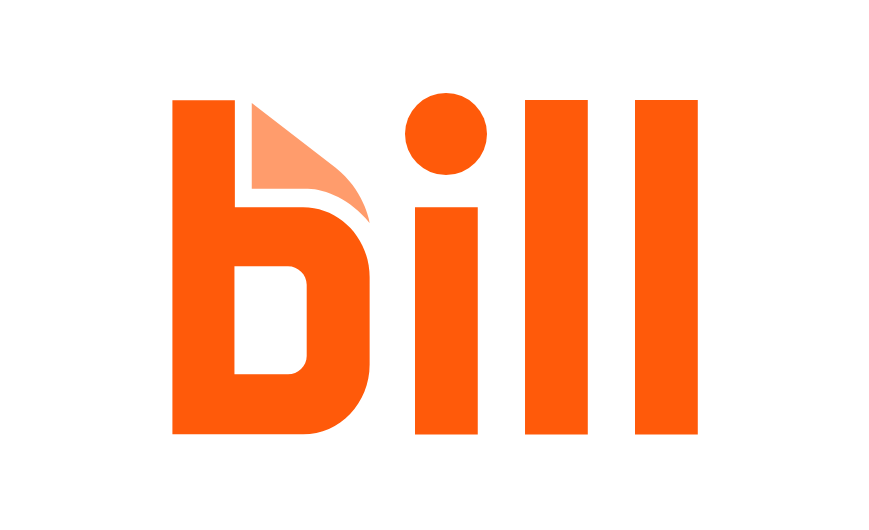Treatment planning has always been an integral step in dental implant treatment. The old adage, “Failing to plan is planning to fail” is especially true in implant dentistry where there are so many factors to consider. While the extent of planning is left to the discretion of the clinician, modern technology has made it easier and safer than ever to give patients the highest-quality care. Examining a patient’s clinical situation and planning the locations where implants will need to be placed is only one aspect of the preliminary work we do in implant dentistry. The individual patient’s needs, wishes and expectations are important considerations as well, and add to the complexity of a case.
Gaining an understanding of the full picture of any given case is essential for helping the patient better understand the extent of the treatment, as well as ensuring a successful treatment outcome.
Planning in three dimensions
Various methods exist for better visualising the unseen factors hidden behind tissue and in the bone. Panorex model-based planning is one option. Tracing relevant anatomical pictures with a pen on a transparent paper is another. One could also select the appropriate length of the intended implant system through transparent “radiographic guides” (transparent slides containing the outlines of the implant system).
However, my preferred method is using 3-D X-ray datasets in combination with dedicated planning software.
For select cases, I began using the planning and guided surgery options that became available with the original launch of the NobelGuide treatment concept in 2005.
Already satisfied with the treatment predictability I had grown to expect with NobelGuide, the 2011 launch of the diagnostics and treatment planning NobelClinician Software took me a step further.
Now I can follow a complete and effective workflow that can turn my treatment plan into reality as it anticipates and defines the future prosthetic restoration.
As a Mac (Apple Inc.) user, I was very pleased to find that this stand-alone software was available for OS X as well as in a Windows version.
In addition to the enhanced diagnostics and planning features, the new treatment team collaboration options have proved very helpful for ensuring successful patient outcomes. Through NobelConnect, I am now able to safely upload and access my stored plans online using any of my Mac computers (Apple Inc.)—whether I’m using my big office desktop or a laptop while travelling.
embedImagecenter("Imagecenter_1_1997",1997, "large");
Now my primary source
The latest update to NobelClinician provides even more precise implant planning options, and is a very effective visual communication tool when I want to discuss treatment choices with patients. The new volume rendering feature gives me the capability to generate very realistic 3-D models of the patient’s anatomy, without the need of a sometimes time-consuming CT conversion step.
Instead, the volume rendering feature gives me a fast overview of the patient’s anatomy, including pre existing metal objects—such as previously placed implants or screws and osteosynthesis plates from trauma interventions. Volume rendering helps me to use NobelClinician as my primary source for X-ray based patient diagnostics.
There’s an application for that
I am also very impressed with the quality of the automatic report. It includes relevant information for my entire treatment team.
Additionally, the new version allows me to import and review clinical pictures and other digital images, periapical X-rays, for instance, or panrorex data, if relevant to the case.
One exciting new feature that is a part of the latest update is not actually so much a software upgrade as an application. Available via the Apple App Store, the new NobelClinician Communicator iPad (Apple Inc.) application gives me a convenient option to comfortably present the treatment plan to my patient in virtually any setting.
It makes it easy for me to flip through important clinical pictures, X-rays or other images to help my patient better understand the treatment plan. Additionally, I can securely store the presentation on the NobelConnect online space, ensuring no information will be lost.
Keeping prosthetic options at your fingertips is a key aspect of the NobelGuide treatment concept. It is fascinating that I can now plan my implants very predictably and prepare the provisional restoration— even before surgery—for finalisation in the patient’s mouth once guided surgery has been completed.
The stents are impressively accurate because I use the calibration object to calibrate the workflow, beginning with my own CBCT. This results in surgical templates that fit very accurately.
I am very excited about the new developments in this area, especially focusing on partially dentate patients.
NobelClinician provides me and my staff not only with the big picture, but with the full picture. For us this means better planning, more effective communication and collaboration tools that we can trust. We can even order the products needed for the specific surgery directly online! In fact, all Nobel Biocare components are available through the software, regardless if guided surgery is being implemented or not.
I depend on NobelClinician to treat my patients better than ever before.
Editorial note: This article is a reprint from Nobel Biocare News Vol. 15, No.1, 2013. © Nobel Biocare Services AG, 2013. All rights reserved. Nobel Biocare, the Nobel Biocare logotype and all other trademarks are, if nothing else is stated or is evident from the context in a certain case, trademarks of Nobel Biocare. Product images are not necessarily to scale. Disclaimer: Some products may not be regulatory cleared/ released for sale in all markets. Please contact the local Nobel Biocare sales office for current product assortment and availability.
This article was published in cone beam – international magazine of cone beam dentistry No. 03/2015.
Are you a dental professional seeking to enhance your skills in implantology? You are invited to attend an enlightening webinar, titled “Therapy ...
MALSCH, Germany: A concern regarding digitalisation is that it is linked to the risk of important professional disciplines losing significance in the public...
A prevailing myth in healthcare is that the expertise of practitioners is only accessible on-site. The reality is becoming quite different today. With the ...
The use of aligner treatment led to the observation that molar extrusion seems to be prevented during dental movement by full daily use of aligners. This ...
BASEL, Switzerland: As one of the leading dental implant companies, BioHorizons Camlog is committed to driving aesthetic implantology forward through ...
The countdown is finally over. Four years after its last in-person event, the FDI World Dental Congress is making a return. Dental Tribune International ...
While growing up, I always enjoyed brain teasers. When my career in orthodontics began, I was intrigued because everything seemed like a puzzle. While ...
LONDON, UK: When it comes to implants, good outcomes and high predictability are crucial. In a free upcoming Straumann Group webinar on Thursday, 21 ...
CHENGDU, China/SENDAI, Japan: Roughly forty million individuals around the world were living with HIV/Aids in 2021. Highly active antiretroviral therapy ...
CRACOW, Poland: Poland’s premier international dental fair, KRAKDENT, will be taking place from 8 to 10 March. With over 430 exhibitors and an expected ...
Live webinar
Mon. 22 April 2024
10:00 am EST (New York)
Prof. Dr. Erdem Kilic, Prof. Dr. Kerem Kilic
Live webinar
Tue. 23 April 2024
1:00 pm EST (New York)
Live webinar
Wed. 24 April 2024
8:00 am EST (New York)
Dr. Yin Ci Lee BDS (PIDC), MFDS RCS, DClinDent Prosthodontics, Dr. Ghida Lawand BDS, MSc, Dr. Oon Take Yeoh, Dr. Edward Chaoho Chien DDS, DScD
Live webinar
Wed. 24 April 2024
1:00 pm EST (New York)
Live webinar
Fri. 26 April 2024
12:00 pm EST (New York)
Live webinar
Mon. 29 April 2024
12:30 pm EST (New York)
Prof. Roland Frankenberger Univ.-Prof. Dr. med. dent.
Live webinar
Tue. 30 April 2024
1:00 pm EST (New York)



 Austria / Österreich
Austria / Österreich
 Bosnia and Herzegovina / Босна и Херцеговина
Bosnia and Herzegovina / Босна и Херцеговина
 Bulgaria / България
Bulgaria / България
 Croatia / Hrvatska
Croatia / Hrvatska
 Czech Republic & Slovakia / Česká republika & Slovensko
Czech Republic & Slovakia / Česká republika & Slovensko
 France / France
France / France
 Germany / Deutschland
Germany / Deutschland
 Greece / ΕΛΛΑΔΑ
Greece / ΕΛΛΑΔΑ
 Italy / Italia
Italy / Italia
 Netherlands / Nederland
Netherlands / Nederland
 Nordic / Nordic
Nordic / Nordic
 Poland / Polska
Poland / Polska
 Portugal / Portugal
Portugal / Portugal
 Romania & Moldova / România & Moldova
Romania & Moldova / România & Moldova
 Slovenia / Slovenija
Slovenia / Slovenija
 Serbia & Montenegro / Србија и Црна Гора
Serbia & Montenegro / Србија и Црна Гора
 Spain / España
Spain / España
 Switzerland / Schweiz
Switzerland / Schweiz
 Turkey / Türkiye
Turkey / Türkiye
 UK & Ireland / UK & Ireland
UK & Ireland / UK & Ireland
 Brazil / Brasil
Brazil / Brasil
 Canada / Canada
Canada / Canada
 Latin America / Latinoamérica
Latin America / Latinoamérica
 USA / USA
USA / USA
 China / 中国
China / 中国
 India / भारत गणराज्य
India / भारत गणराज्य
 Japan / 日本
Japan / 日本
 Pakistan / Pākistān
Pakistan / Pākistān
 Vietnam / Việt Nam
Vietnam / Việt Nam
 ASEAN / ASEAN
ASEAN / ASEAN
 Israel / מְדִינַת יִשְׂרָאֵל
Israel / מְדִינַת יִשְׂרָאֵל
 Algeria, Morocco & Tunisia / الجزائر والمغرب وتونس
Algeria, Morocco & Tunisia / الجزائر والمغرب وتونس
 Middle East / Middle East
Middle East / Middle East
:sharpen(level=0):output(format=jpeg)/up/dt/2024/04/IDEM-Singapore-2024-Masterclass-Alleman_1.jpg)
:sharpen(level=0):output(format=jpeg)/up/dt/2024/04/IDEM-Singapore_2_Asiga.jpg)
:sharpen(level=0):output(format=jpeg)/up/dt/2024/04/IDEM-Singapore-2024_5_Invisalign.jpg)
:sharpen(level=0):output(format=jpeg)/up/dt/2024/04/IDEM-Singapore-2024-Matthias-Kupper.jpg)
:sharpen(level=0):output(format=jpeg)/up/dt/2024/04/Dental-surgeons-have-an-important-role.jpg)












:sharpen(level=0):output(format=png)/up/dt/2023/03/ACTEON_NEW-logo_03-2024.png)
:sharpen(level=0):output(format=png)/up/dt/2014/02/3shape.png)
:sharpen(level=0):output(format=png)/up/dt/2022/06/RS_logo-2024.png)
:sharpen(level=0):output(format=png)/up/dt/2021/02/logo-gc-int.png)
:sharpen(level=0):output(format=png)/up/dt/2017/01/fb9463fa67d36c80fef847d0944d9250.png)

:sharpen(level=0):output(format=jpeg)/up/dt/2024/04/IDEM-Singapore-2024-Masterclass-Alleman_1.jpg)
:sharpen(level=0):output(format=gif)/wp-content/themes/dt/images/no-user.gif)
:sharpen(level=0):output(format=jpeg)/up/dt/2023/11/Unlock-the-secret-to-successful-implant-treatment.jpg)
:sharpen(level=0):output(format=jpeg)/up/dt/2019/03/The-digital-practice.jpg)
:sharpen(level=0):output(format=jpeg)/up/dt/2022/06/How-can-remote-monitoring-lead-to-better-treatment-outcomes.jpg)
:sharpen(level=0):output(format=jpeg)/up/dt/2023/05/Proper-curve-of-Spee-levelling.jpg)
:sharpen(level=0):output(format=jpeg)/up/dt/2022/04/2022-BioHorizons-Camlog-Global-Education-Tour.jpg)
:sharpen(level=0):output(format=jpeg)/up/dt/2023/09/FDI-Sydney-2023_11.jpg)
:sharpen(level=0):output(format=jpeg)/up/dt/2017/01/514e49fa5c894cf96711c388dea1bc4f.jpg)
:sharpen(level=0):output(format=jpeg)/up/dt/2019/11/straumann-webinar-1.jpg)
:sharpen(level=0):output(format=jpeg)/up/dt/2023/05/HAART-treatment-for-HIVAids-patients-plays-key-role-in-their-oral-health4.jpg)
:sharpen(level=0):output(format=jpeg)/up/dt/2018/02/KRAKDENT.jpg)





:sharpen(level=0):output(format=jpeg)/up/dt/2024/04/IDEM-Singapore-2024-Masterclass-Alleman_1.jpg)
:sharpen(level=0):output(format=jpeg)/up/dt/2024/04/IDEM-Singapore_2_Asiga.jpg)
:sharpen(level=0):output(format=jpeg)/up/dt/2024/04/IDEM-Singapore-2024_5_Invisalign.jpg)
:sharpen(level=0):output(format=jpeg)/wp-content/themes/dt/images/3dprinting-banner.jpg)
:sharpen(level=0):output(format=jpeg)/wp-content/themes/dt/images/aligners-banner.jpg)
:sharpen(level=0):output(format=jpeg)/wp-content/themes/dt/images/covid-banner.jpg)
:sharpen(level=0):output(format=jpeg)/wp-content/themes/dt/images/roots-banner-2024.jpg)
To post a reply please login or register